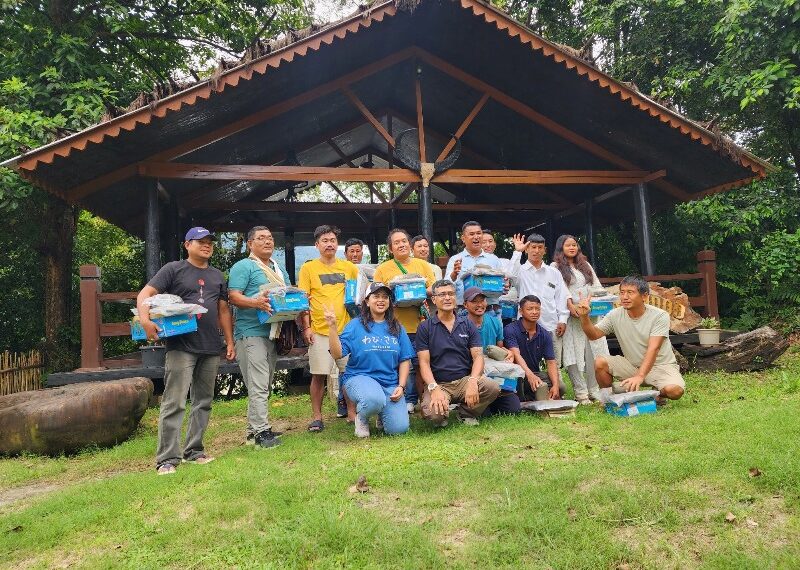GUWAHATI: In an effort to strengthen the Community Surveillance and Monitoring Team (CSMT) in Arunachal Pradesh’s Pasighat, Aaranyak distributed essential field gear to the team members during an event on Saturday.
The field gear consists of 43 raincoats, 43 winter wear sets, and 43 pairs of field boots to ensure that the team members are well-equipped to perform their duties in all weather conditions.
The event was graced by Mebo constituency legislator Oken Tayeng, who praised Aaranyak’s ongoing commitment to wildlife conservation.
In his address, the MLA expressed his gratitude to Aaranyak for their support and emphasized the importance of the CSMT’s role in safeguarding the sanctuary.
He urged the team to continue their diligent efforts in preventing wildlife crime, thereby helping to preserve the region’s rich biodiversity.
CSMT chairperson Maksam Tayeng and Secretary Oki Modi also expressed their gratitude to Aaranyak for their valuable contribution.
They acknowledged that the field gear would greatly enhance their operational efficiency and morale, especially during adverse weather conditions.
Attending the event, Senior Manager of Aaranyak Dr. Jimmy Borah, and Senior Project Officer Ivy Farheen Hussain reiterated the organization’s commitment to support community-based conservation initiatives.
They highlighted the importance of equipping frontline conservation workers with the necessary tools to combat wildlife crime effectively.
This event has marked another milestone in Aaranyak’s ongoing efforts to foster collaboration and support local conservation teams, ensuring that the natural heritage of the D’Ering Wildlife Sanctuary is preserved for posterity.
The CSMT comprises local community members who undertake the responsibility of safeguarding their community from wildlife crimes. By involving the community directly in surveillance and monitoring efforts, CSMTs empower locals to protect their natural resources, promote conservation, and deter illegal activities such as poaching and habitat destruction.
This community-centric approach not only enhances the effectiveness of wildlife protection but also fosters a sense of ownership and pride among the community members in preserving their environment.















